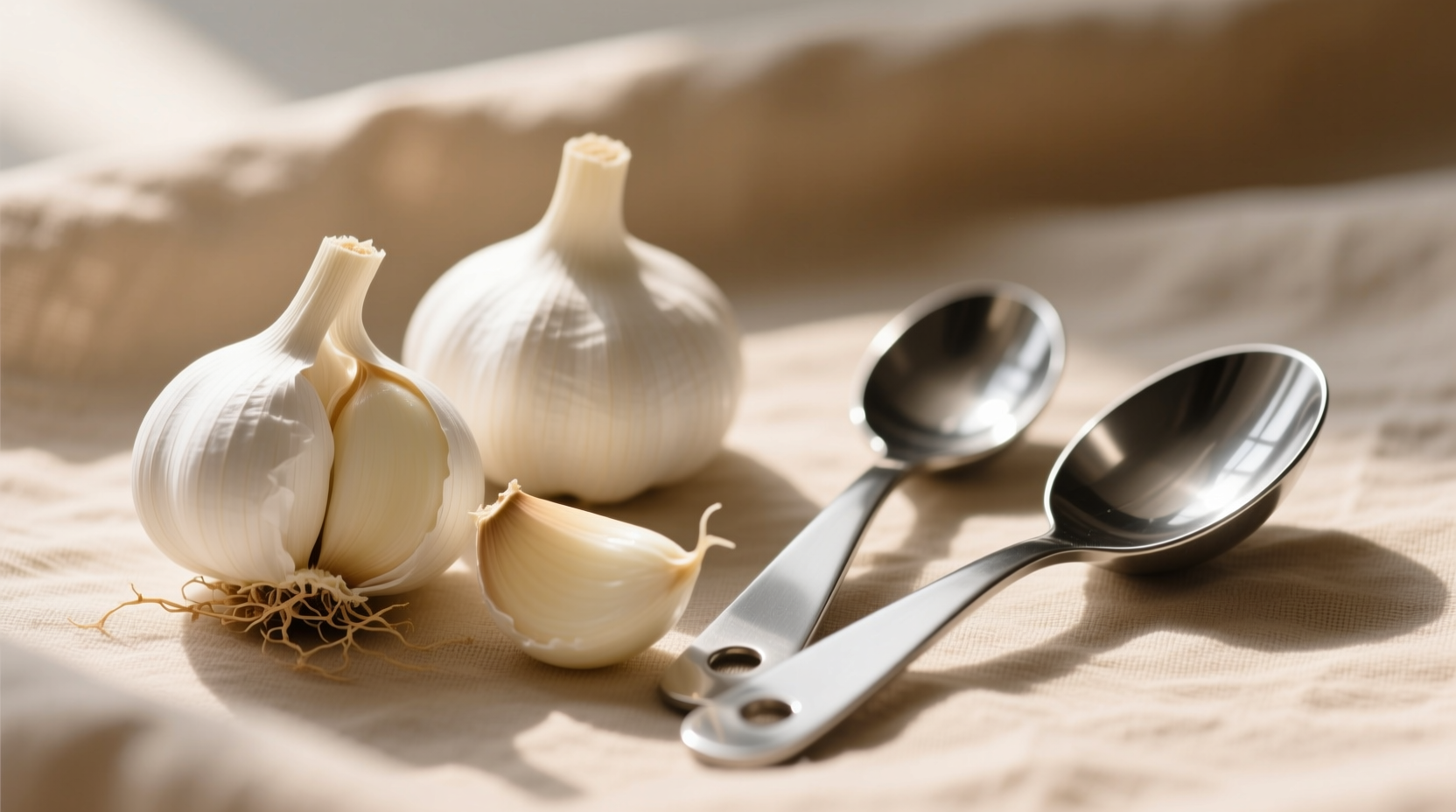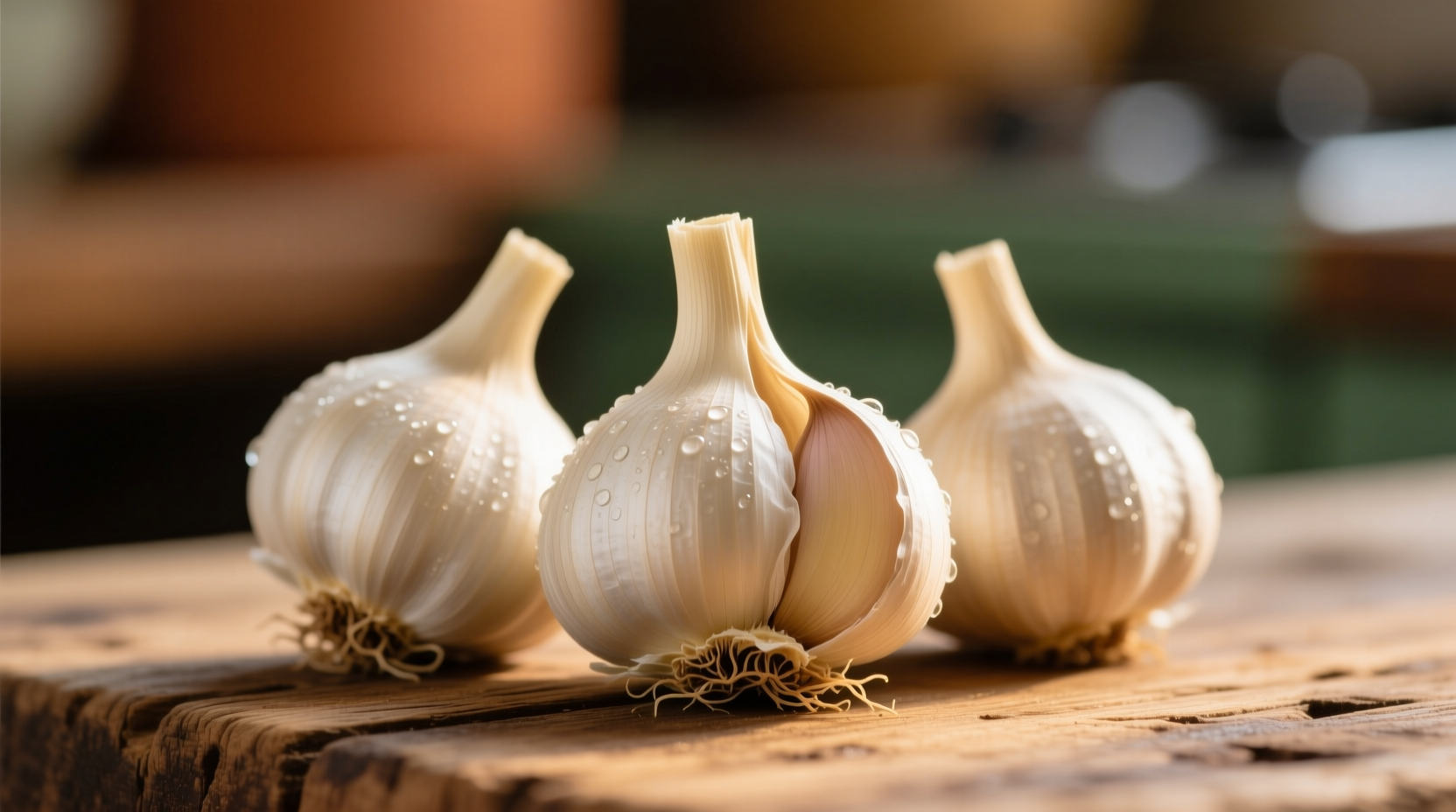Why Precise Garlic Measurement Matters in Your Cooking
Getting garlic quantities right transforms ordinary dishes into culinary successes. Too little leaves flavors flat; too much creates overpowering bitterness. Three cloves represents a versatile sweet spot—enough to impart garlic's signature aroma and depth without dominating other ingredients. Professional chefs rely on this measurement for sauces, marinades, and sautés where garlic plays a supporting rather than starring role.
Understanding Garlic Measurements: From Clove to Tablespoon
Garlic size varies significantly between varieties and growing conditions. A standard grocery store garlic clove measures about 1 inch long and 1/2 inch in diameter. When recipes specify "three cloves," they assume this average size. Here's exactly what you're working with:
| Garlic Form | Equivalent to 3 Cloves | Visual Reference |
|---|---|---|
| Whole peeled cloves | 3 medium cloves | About the size of three large almonds |
| Minced garlic | 1 1/2 teaspoons | Fills half a standard teaspoon twice |
| Garlic paste | 1 teaspoon | Size of a large pea, twice |
| Garlic powder | 1/4 teaspoon | Tip of a small knife |
When Three Cloves Creates Perfect Flavor Balance
This amount shines in Mediterranean, Italian, and French cuisines where garlic enhances rather than dominates. Think tomato sauces, salad dressings, and vegetable sautés. For Asian stir-fries requiring more aggressive garlic presence, many chefs increase to four or five cloves. The historical evolution of garlic usage reveals why three cloves became a culinary standard:
Garlic Measurement Evolution Timeline
- Ancient Egypt: Garlic measured by whole bulbs for laborer rations (not precise clove counts)
- Medieval Europe: "Handful" measurements common; cloves rarely separated
- 1800s French Cuisine: First standardized recipes specifying "2-3 cloves" for subtle flavoring
- 1950s American Cookbooks: "3 cloves" established as standard for family-sized recipes
- Present Day: Precision cooking recognizes size variations requiring measurement equivalents
Practical Techniques for Working with Three Cloves
Professional kitchens maximize flavor from minimal garlic through proper preparation. First, separate cloves from the bulb and remove the papery skin. For even mincing, America's Test Kitchen recommends placing cloves flat-side down, smashing with a knife blade, then rocking the knife for uniform pieces. When time is short, a garlic press delivers consistent results with minimal effort.
Temperature control proves critical—garlic burns at 300°F (149°C), turning bitter. For three-clove applications, add to oil when it shimmers but before smoking. Sauté just until fragrant (about 30 seconds), then proceed with other ingredients. This technique preserves garlic's complex flavor compounds while preventing acrid notes.

Contextual Boundaries: When Three Cloves Isn't Enough (or Too Much)
Not all recipes treat three cloves equally. Consider these contextual factors before measuring:
- Garlic variety matters: Mild Elephant garlic requires 4-5 cloves to match standard garlic's impact
- Dish volume affects perception: Three cloves works for 4 servings but needs doubling for 8
- Cooking method changes intensity: Roasted garlic needs 50% more than raw for equivalent flavor
- Cuisine traditions vary: Italian pasta sauces use 3 cloves per pound of tomatoes; Chinese stir-fries often double this
Smart Substitutions When You Lack Exactly Three Cloves
Running short on fresh garlic? These substitutions maintain recipe integrity while using what you have:
- Garlic paste: Use 1 teaspoon (found in tubes near produce sections)
- Minced garlic in oil: Substitute 1 1/2 teaspoons (check for added preservatives)
- Garlic powder: 1/4 teaspoon equals three fresh cloves (ideal for rubs and dry applications)
- Roasted garlic: 1 whole roasted head substitutes for 6 fresh cloves (use half for three-clove recipes)
Remember that processed garlic forms lack the enzymatic complexity of fresh. When substituting, add processed garlic later in cooking to preserve flavor integrity. The USDA FoodData Central confirms that fresh garlic contains allicin compounds that degrade during processing, affecting both flavor and health benefits.
Avoiding Common Three-Clove Mistakes
Even experienced cooks stumble with small garlic quantities. Watch for these pitfalls:
- Assuming uniform size: Large cloves can be double the volume of small ones—measure when precision matters
- Adding too early: Garlic burns quickly; add after onions have softened in sautés
- Over-mincing: Excessive chopping releases bitter compounds—aim for consistent 1/16-inch pieces
- Ignoring freshness: Sprouting or soft garlic has diminished flavor—replace cloves showing these signs
Maximizing Flavor from Your Three Cloves
Professional chefs employ these techniques to extract maximum flavor from minimal garlic:
- Let minced garlic rest 10 minutes before cooking to develop flavor compounds
- Add a pinch of salt during mincing to prevent oxidation and browning
- Combine with acid (lemon juice or vinegar) early to mellow sharpness
- Use the side of your knife to smash cloves before mincing for more even texture
These methods ensure your three cloves deliver optimal flavor without overwhelming other ingredients. For best results, purchase garlic with tight, unbroken skin and store in a cool, dark place with good air circulation—never in the refrigerator where moisture promotes sprouting.











 浙公网安备
33010002000092号
浙公网安备
33010002000092号 浙B2-20120091-4
浙B2-20120091-4